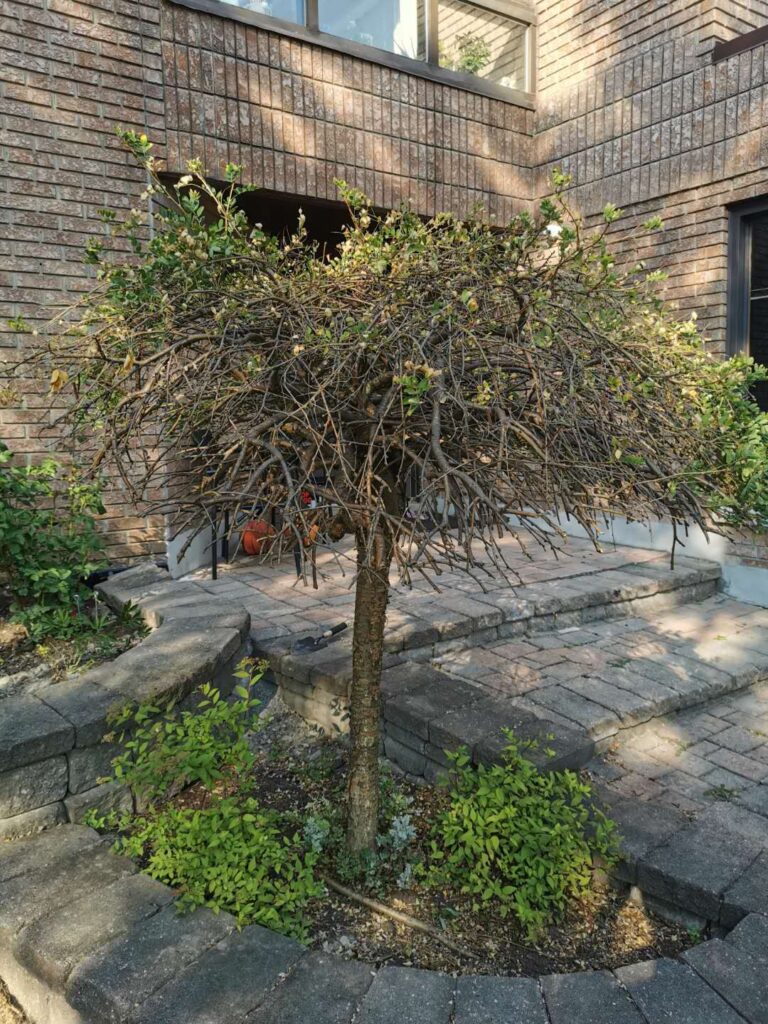
I have a ornamental Siberian pea shrub about 5-6 feet high. Last year I noted it lost some leaves early before autumn. This year the problem became more serious. Many branches lost leaves except a few branch close to the house. (Our house is facing southwest.) Sou is pretty clay type. This year we did out in some top soil but it didn’t help. We live in Markham.
Thank you for contacting the Toronto Master gardeners concerning your Pea shrub.
Siberian pea tree,(Caragana arborescens), member of the pea family (Fabaceae), is a deciduous shrub or small tree native to Siberia and Manchuria. When grown under optimum conditions this tree can attain heights of between 10 to 15 feet. The yellow snapdragon like flowers appear early in the season forming pea-like pods in June or early July.
This tree is adaptable to most sites from full sun to partial shade and will grow in either clay, loam or sandy soil. Since this plant is so adaptable the plant requires minimal care once it’s established. It should be fertilized once a year in the spring and watered every week unless the weather is overly hot and dry, and pruned when the tree is dormant, ideally in late winter to early spring,
The most common diseases and pests that affect this tree include leaf spot, branch cankers, blister beetles. You do not mention any unusual insect activity or wounds on your tree. From your description it sounds as if your tree has been suffering a slow decline for a number of years.
My first inclination when looking at your photo is that your tree’s problem is environmental. From your photo your tree appears to be surrounded by compacted soil underneath interlocking stones. A tree’s roots extend at least twice the length of its branches, and the Siberian pea has quite a massive extensive root system. In order for trees to survive their roots require oxygen, which they get directly from soil pores. Trees also require an appropriate amount of soil volume. The more compacted the soil the less oxygen and water absortion leading to an unhealthy short lived tree.
This summer has been extremely dry, have you been watering your tree on a regular basis? Or could your tree be overwatered? Soil which has been waterlogged for longer than 48 hours can cause the roots to die. Persistent anaerobic conditions will result in a dead tree.
Lack of regular nutrients could also be another issue. Yearly addition of compost is a good way to incorporate much needed nutrients. Was the tree properly planted in the first place?
Take a look at the trunk of the tree. Every tree has a flare near the bottom where the trunk widens right before the roots begin. It is very important that the entire flare of the trunk is above the level of the soil. If it is below the level of the soil it will break down the bark and eventually kill the tree. If the tree is too deep you will need to dig around the tree and raise it up.
Look around the base of the root flare and make sure there are no roots growing around the trunk if so the root can grow around the trunk squeezing it. It is best to remove any girdling roots.
Trees should not be planted in the ground in the plastic buckets that nurseries use for young saplings. Those containers should be carefully removed prior to planting in a properly prepared space. You may also be interested in our Gardening Guide: Planting a Tree
Good Luck with your tree

